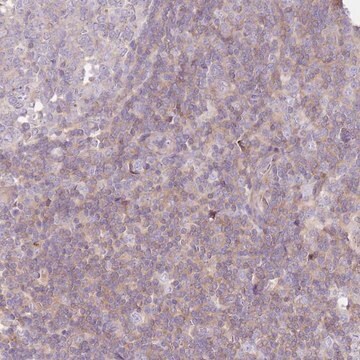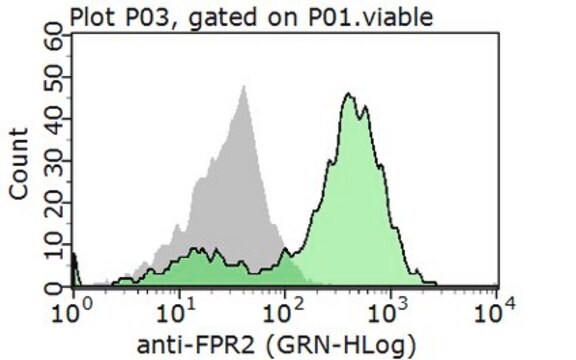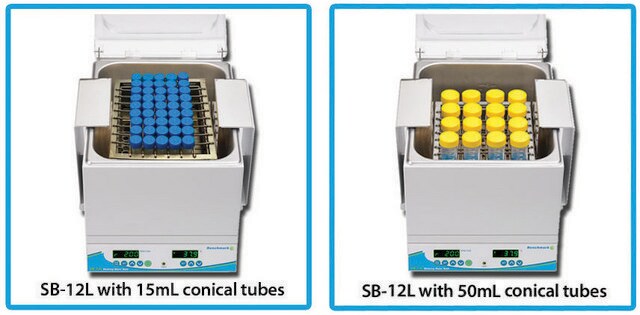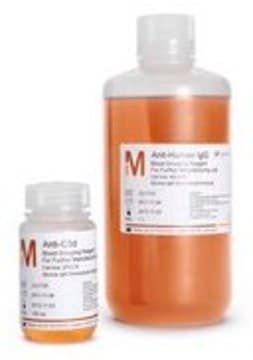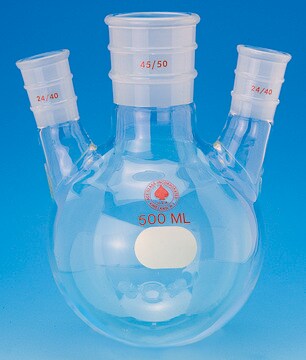一般說明
We are committed to bringing you greener alternative products, which adhere to one or more of The 12 Principles of Green Chemistry. This antibody is Preservative-free, produced without the harm or sacrifice of animals and exceptionally stable to allow for ambient shipping and storage if needed and thus aligns with "Waste Prevention", "Designing Safer Chemicals" and "Design for Energy Efficiency".
Click here for more information.
ZooMAb® antibodies represent an entirely new generation of recombinant monoclonal antibodies. Each ZooMAb® antibody is manufactured using our proprietary recombinant expression system, purified to homogeneity, and precisely dispensed to produce robust and highly reproducible lot-to-lot consistency. Only top-performing clones are released for use by researchers. Each antibody is validated for high specificity and affinity across multiple applications, including its most commonly used application. ZooMAb® antibodies are reliably available and ready to ship when you need them.
特異性
Clone 1D14 is a ZooMAb® rabbit recombinant monoclonal antibody that specifically detects Met-Leu-Phe receptor (FPR1). It targets an epitope within 17 amino acids from the third extracellular domain within the internal region.
免疫原
KLH-conjugated linear peptide corresponding to 17 amino acids from the third extracellular domain within the internal region of human Met-Leu-Phe receptor (FPR1).
應用
Quality Control Testing
Evaluated by Western Blotting in Mouse liver tissue lysate.
Western Blotting Analysis: A 1:1,000 dilution of this antibody detected FPR1 in Mouse liver tissue lysate.
Tested Applications
Western Blotting Analysis: A 1:1,000 dilution from a representative lot detected FPR1 in Human liver and Rat liver tissue lysates.
Affinity Binding Assay: A representative lot of this antibody bound FPR1 peptide with a KD of 1.2 x 10-8 in an affinity binding assay.
Flow Cytometry Analysis: 0.1 µg from a representative lot detected FPR1 in one million Human peripheral blood mononuclear cells (PBMC).
Immunohistochemistry (Paraffin) Analysis: A 1:3,000 dilution from a representative lot detected FPR1 in Human tonsil tissue sections.
Immunocytochemistry Analysis: A 1:100 dilution from a representative lot detected FPR1 in MCF-7 cells.
Note: Actual optimal working dilutions must be determined by end user as specimens, and experimental conditions may vary with the end user.
標靶描述
Met-Leu-Phe receptor (UniProt: P21462; also known as fMLP receptor, N-formyl peptide receptor, FPR, N-formylpeptide chemoattractant receptor, FPR1) is encoded by the FPR1 gene (Gene ID: 2357) in human. Formyl peptide receptors (FPRs) belong to the G protein-coupled receptor (GPCR) family and serve as chemotactic receptors and pattern recognition receptors that recognize bacterial and mitochondria-derived formylated peptide. They detect a wide range of ligands, including host-derived peptides and lipids. Three types of FPRs have been described in human (FPR1, FPR2, and FPR3). FPR1 is a multi-pass membrane glycoprotein with seven transmembrane domains and is highly expressed in neutrophils. It displays high affinity for N-formyl-methionyl peptides (fMLP), which are powerful neutrophil chemotactic factors. Binding of fMLP to the receptor stimulates intracellular calcium mobilization and superoxide anion release. This response is mediated via a G-protein that activates a phosphatidylinositol-calcium second messenger system. FPR1 is expressed not only in immune cells but also in intestinal epithelial cells and intestinal neuronal cells and is associated with inflammatory bowel disease (IBD). Higher expression of FPR1 is observed in intestines of subjects with Crohn s disease and ulcerative colitis. FPR1 expression is also observed in nasal epithelial cells, lung epithelial cells, and lung fibroblasts. Its primary role in the respiratory tract is to promote wound healing or promote leukocyte migration to FPR1 ligands generated upon lung damage. The mechanisms involved in FPR processing (uncoupling from G proteins and internalization) are reported to be regulated differentially by phosphorylation at distinct sites within the highly conserved sequence motif in its C-terminal region. This sequence consists of two clusters of serine and threonine residues preceded by acidic residues. Phosphorylation of either of these two clusters is shown to be sufficient to mediate internalization, whereas disruption of one cluster can completely inhibit desensitization. Blocking phosphorylation at residues 328, 329, 331, and 332 (site A) completely abolishes receptor desensitization but has no effect on receptor internalization. This ZooMAb® recombinant monoclonal antibody, generated by our propriety technology, offers significantly enhanced specificity, affinity, reproducibility, and stability over conventional monoclonals. (Ref.: Jeong, YS., and Bae, Y-S. (2020). Exp. Mol. Med. 52(10); 1694-1704; Maestes, DC., et al. (1999). J. Biol. Chem. 274(42); 29791-29795).
外觀
Purified recombinant rabbit monoclonal antibody IgG, lyophilized in PBS with 5% Trehalose, normal appearance a coarse or translucent resin. The PBS/trehalose components in the ZooMAb formulation can have the appearance of a semi-solid (bead like gel) after lyophilization. This is a normal phenomenon. Please follow the recommended reconstitution procedure in the data sheet to dissolve the semi-solid, bead-like, gel-appearing material. The resulting antibody solution is completely stable and functional as proven by full functional testing. Contains no biocide or preservatives, such as azide, or any animal by-products. Larger pack sizes provided as multiples of 25 µL.
重構
300 µg/mL after reconstitution at 25 µL per vial. Please refer to guidance on suggested starting dilutions and/or titers per application and sample type.
儲存和穩定性
Recommend storage of lyophilized product at 2-8°C; Before reconstitution, micro-centrifuge vials briefly to spin down material to bottom of the vial; Reconstitute each vial by adding 25 µL of filtered lab grade water or PBS; Reconstituted antibodies can be stored at 2-8°C, or -20°C for long term storage. Avoid repeated freeze-thaws.
法律資訊
ZooMAb is a registered trademark of Merck KGaA, Darmstadt, Germany
免責聲明
Unless otherwise stated in our catalog or other company documentation accompanying the product(s), our products are intended for research use only and are not to be used for any other purpose, which includes but is not limited to, unauthorized commercial uses, in vitro diagnostic uses, ex vivo or in vivo therapeutic uses or any type of consumption or application to humans or animals.

